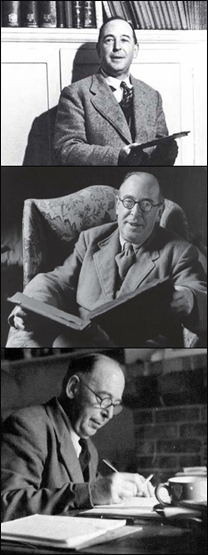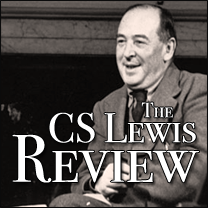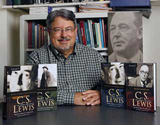
So the Gloves Come Off: The New Yorker and New York Times Tackle Narnia
November 19th, 2005 | Skip to comments
No surprise here, but New York interlektuls (as Flannery O’Connor called them) don’t like Lewis, but, what’s more, they don’t like anyone else liking him either. It is hard to tell which may be worse, Lewis or we, his too numerous admirers. So–a doleful warning is to be issued by New York media to all of us hinterland folk who are about to taken in.
To wit, two writers, self-appointed sheriffs, have arisen to save us from ourselves: Adam Gopnik’s just posted “Prisoner of Narnia” New Yorker piece on C. S. Lewis; and Charles McGrath’s “The Narnia Skirmishes” his Nov. 13 NYT hatchet job on Lewis and the Narnian movies, demonstrate that the gloves are finally coming off in the public square debate over the nature of Planet Narnia–and its would-be citizens.
Gopnik’s essay, purportedly a review of Alan Jacob’s The Narnian, does justice neither to Alan’s book nor to Lewis, parading out the tired, trite and uninformed cliches about Lewis’s life and times, while exaggerating the supposedly profound differences between the downright embarrassing “British CSL” and the equally deplorable saintly “American CSL.” (Did he even read Jacobs’ text?)
Following A. N. Wilson’s smarmy lead (whose 1990 biography of Lewis gets few things right, but therein and thereby paradoxically establishes himself as a worthy expert for Gopnik), Gopnik delights particularly in skewering American readers’ embrace of Lewis’s “childhood imagination,” which he excoriates as the imagination that never grew up.
None of this would matter, Gopnik says, if it weren’t for Narnia. Meaning: we have to pay attention to this guy and his legions of readers because of the hit movie that will be brainwashing young minds, perhaps–Oh Dear!–forever scarring them with the alleged truth of Christianity.
What little Gopnik understands of Lewis or of Christianity is revealed in this amazingly stupid comment about the dubious validity of using a Lion as a symbol of Christ:
The emotional power of the book, as every sensitive child has known, diminishes as the religious part intensifies. The most explicitly religious part of his myth is the most strenuously, and the least successfully, allegorized. Aslan the lion, the Christ symbol, who has exasperated generations of freethinking parents and delighted generations of worried Anglicans, is, after all, a very weird symbol for that famous carpenter’s son-not just an un-Christian but in many ways an anti-Christian figure.
Gopnik reveals here that he knows nothing of Biblical—or mythological—imagery or the meaningfulness of linking Christ to lionhood. Gopnik is like many sophomoric writers who must-find-something-to-say even about a topic they loathe, because they know it will dominate everyone’s water cooler talk in two weeks—and he can only filter his puny command of subject matter through the anti-religious grids and screeds of his jaded adulthood; but, come on people, relying on Wilson’s biography to get Lewis’s backstory correct is like asking Wile E. Coyote what he thinks of Road Runner.
Then there is McGrath’s essay (which actually is a much more nakedly cynical and mean-spirited piece than Gopnik’s, but which, in true Times fashion, masquerades–and was no doubt regarded by his editors–as a “generous” and “balanced” treatment) that boasts the same obligatory reference to Philip Pullman deployed by Gopnik.
(One surmises these days that no article on Narnia or Lewis would be complete-among those emanating from New York, anyway–without a reference to Pullman, the arch-Anti-Narnian, whose writing career seems to be entirely founded on his hatred for Lewis, Narnia, the Church of England, and Christ himself. The man should, simply put, get a life, and, along the way, a topic, one that at least he could write about unapopletically, and, perhaps, even without sneering.)
McGrath’s homework lacks the same veracity and tenacity as Gopnik’s; for no one who knows anything about Lewis’s life could write these two sentences:
In middle age, Lewis became the romantic figure depicted in Shadowlands, the Richard Attenborough movie based on William Nicholson’s play. Both are a more or less faithful account of his surprising marriage, at age 58, to one of his many female groupies, Joy Gresham, an American divorcee and convert from Judaism, who died of cancer less than four years later.
The movie cited makes so many mistakes, not the least of which is undercutting the very foundation of Christian faith that brought the two disparate people together, it is hard to know what would constitute a poorly written and conceived screenplay. Naturally, McGrath endorses it. But, his real goal, to dismiss Narnia outright, is reached here:
But you sense that among many British critics the real failure of the books is that they’re so middle class – so affirming of traditional behaviors and role models, of old-fashioned, Church of England religion and Tory politics.
McGrath has no conception of how radical and far-reaching Lewis’s Narnian vision is, how distinct and distant it is from anything “middle-class, Anglican, Tory, or traditional.” To paraphrase Lewis, in trying to read between the lines, he fails to read the lines themselves.
McGrath and Gopnik are both oblivious to the Chronicles’ subtle critique of U.K. imperialism, their droll attack on sexism and “Boy’s Own” chauvinism (that is Lucy up there, isn’t it, serving as the one true protagonist of LWW?), their championing of supernatural faith against the tide of wan and waning Anglican secularist religion, their celebration of sacrificial love for one’s fellow creatures, their evident environmentalism and animal-rights activism, their denunciation of authoritarian and oppressive government. . . the list of nonconformist, unpredictable, heterodox-because-orthodox-when-compared-with-the status-quo themes could be extended indefinitely.
But that is hardly the point. Writers like Gopnik, Wilson, Pullman, and McGrath, as well as periodicals like The New Yorker and Times, exist for one primary reason: to be the official organs of principled opposition to faith in our times, all under the guise of objectivity. They have laid low on Lewis for years, but now the gloves are off. Expect more of the same for quite a while. Rest assured, their message says–Wink, Wink–Western civilization is once again to be saved from the Gospel, for these guys are not going to be duped like the rest of us poor saps. With friends like these, who needs editors?
SIGH. . . On to something else more pleasant, I think. I was interviewed for an hour by USA TODAY on Friday, and was asked about articles like these, and the movie, for an article to appear Fri., December 2. Watch for it and let me know what you think.
Other news, interviews recently published, or streamed audio:
- NEXT PUBLIC SEMINAR (December 2-3, 2005): Trinity Lecture Series
Trinity Reformed Episcopal Church; 5920 Butler-Warren Rd., Mason, OH 45040. I will be speaking twice this particular weekend; once at the church facility (Fri., Dec. 2nd, 7PM) and at a special book-signing event at Barnes and Noble Bookstore (Sat., Dec. 3rd @ 7PM; 9455 Civic Centre Blvd; West Chester, OH 45069; 513-755-2258). - Sat., Nov. 19th TOLEDO BLADE interview/story about yours truly and Disney’s marketing of Narnia.
- Fri., Nov. 18th FINDLAY COURIER article on my Winebrenner Seminary Lectures.
- JANET PARSCHALL’S AMERICA, a nationally syndicated radio show featured a call-in interview with me, discussing my book, Further Up and Further In; scroll down and find the “Hour 3,” November 16th broadcast link. (The hour begins with Dr. Marvin Hinten, another Lewis scholar, and you can also “fast forward” to the second half hour to find me. You will need Real Player to play it.)
- Joy-FM (Tampa, FL). 4 minute interview with me discussing The Lion, the Witch, and the Wardrobe as book and movie.
- COLUMBUS DISPATCH Friday, Nov. 11th article on Lewis and Narnia with generous quotations from me.




Comments
No comments yet.
RSS feed for comments on this post.
Sorry, the comment form is closed at this time.